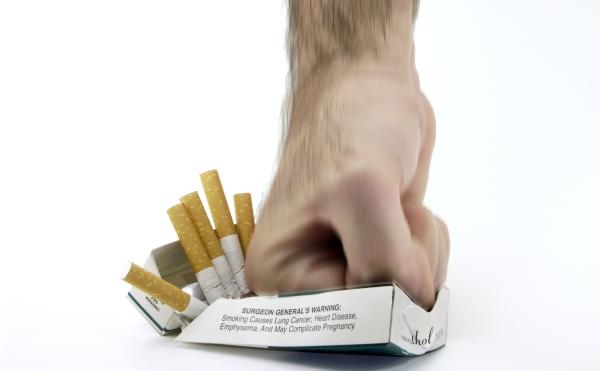Secondhand Smoke Kills 42,000 Nonsmokers a Year in US

How many Americans die from smoking without even lighting up a cigarette? More than 42,000 people a year, including 900 infants, according to a new, thorough analysis of secondhand smoke deaths by researchers at the University of California, San Francisco.
Altogether, that's 600,000 years of potential life lost — an average of 14.2 years for each nonsmoker who has died prematurely as a result of someone else's smoking — amounting to $6.6 billion in lost productivity.
The early deaths disproportionately affect African-Americans, especially black infants. And the researchers said they are likely underestimating the true impact. Their results are detailed this month in the American Journal of Public Health.
Even so, according to a Gallup poll conducted July 9-12, many smokers and nonsmokers are unaware of secondhand smoke danger, with just 28 percent of smokers saying secondhand smoke is very harmful to adults, compared with 63 percent of nonsmokers. Nearly one in four smokers said secondhand smoke is not too harmful or not harmful at all.
Gets in your blood
The U.S. Centers for Disease Control and Prevention (CDC) has estimated that secondhand smoke causes about 49,000 deaths annually. The data supporting this, however, rely primarily on self-reporting to gauge secondhand smoke exposure, which many researchers consider unreliable.
Furthermore, given the poor air quality in most large American cities, calculating the number of deaths among nonsmokers due to secondhand smoke — as opposed to diesel fumes and coal burning, for example — has been difficult for researchers.
Sign up for the Live Science daily newsletter now
Get the world’s most fascinating discoveries delivered straight to your inbox.
The UCSF researchers took a fresh approach by basing their numbers on a chemical called cotinine in the blood, which is a byproduct of smoking proportional to the amount of exposure to tobacco smoke. Most of us have cotinine in our blood; but those who are exposed to lots of secondhand smoke at home or, for example, at a bar, will have higher levels. [Never Too Late: 5 Habits You Should Still Quit]
This is the first estimate of secondhand smoking deaths and economic impact based on serum cotinine, said the study's lead author, Wendy Max, professor of health economics at the UCSF School of Nursing.
An underestimate
The new study shows that the statistics on fatalities resulting from ischemic heart disease are 25 percent lower than previously reported (34,000 deaths compared with 46,000), but nearly twice as high for lung cancer deaths (7,333 deaths compared with 3,400).
Nevertheless, this is likely an underestimate, Max told LiveScience. She said the number of deaths her team calculated is a statistical estimate, not an identification of particular individuals.
"It is true that smoking is banned in many public places and workplaces," Max said. "However, our use of the biomarker indicates that people are still being exposed more than we realized. Much of this may be at home, but not all. Studies show that even small amounts of secondhand smoke exposure may have a negative impact on health, particularly for people who are vulnerable for various reasons."
The vulnerable include newborns, either exposed in the womb or after birth, and adults with existing heart and lung problems.
The largest toll is on African-Americans. Blacks accounted for 13 percent of all deaths, but up to 36 percent of infant deaths. Black adults had significantly greater exposure rates than did whites in all age groups.
"This burden results in communities of color suffering relatively greater losses," both in health and economic potential to their communities and the nation, the researchers wrote.
The UCSF researchers relied on date from several sources, including the National Health and Nutrition Examination Survey, the National Health Interview Survey, and the Multiple Cause of Death data file, which contains records of 2.4 million deaths.
Christopher Wanjek is the author of a new novel, "Hey, Einstein!", a comical nature-versus-nurture tale about raising clones of Albert Einstein in less-than-ideal settings. His column, Bad Medicine, appears regularly on LiveScience

Christopher Wanjek is a Live Science contributor and a health and science writer. He is the author of three science books: Spacefarers (2020), Food at Work (2005) and Bad Medicine (2003). His "Food at Work" book and project, concerning workers' health, safety and productivity, was commissioned by the U.N.'s International Labor Organization. For Live Science, Christopher covers public health, nutrition and biology, and he has written extensively for The Washington Post and Sky & Telescope among others, as well as for the NASA Goddard Space Flight Center, where he was a senior writer. Christopher holds a Master of Health degree from Harvard School of Public Health and a degree in journalism from Temple University.










